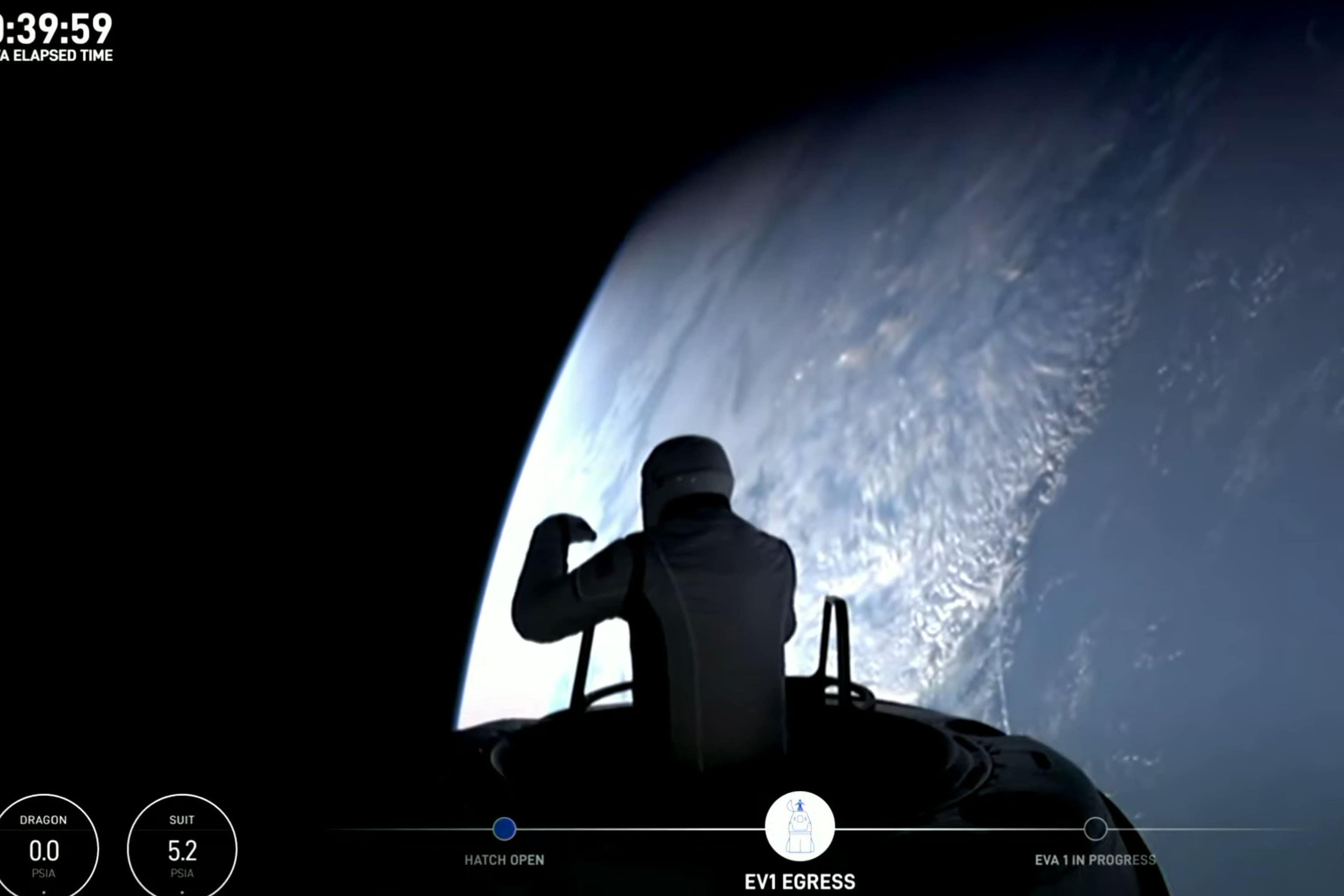SpaceX: Billionaire leaves spacecraft on perilous first ever spacewalk

Your support helps us to tell the story
From reproductive rights to climate change to Big Tech, The Independent is on the ground when the story is developing. Whether it's investigating the financials of Elon Musk's pro-Trump PAC or producing our latest documentary, 'The A Word', which shines a light on the American women fighting for reproductive rights, we know how important it is to parse out the facts from the messaging.
At such a critical moment in US history, we need reporters on the ground. Your donation allows us to keep sending journalists to speak to both sides of the story.
The Independent is trusted by Americans across the entire political spectrum. And unlike many other quality news outlets, we choose not to lock Americans out of our reporting and analysis with paywalls. We believe quality journalism should be available to everyone, paid for by those who can afford it.
Your support makes all the difference.A billionaire floated in space in the first ever private spacewalk on Thursday – a major milestone for space tourism, and for SpaceX, which aims to make humanity an “interplanetary” species.
Businessman Jared Isaacman, 41, stepped out of his capsule while hundreds of miles from Earth, attached to a tether and watched on a live feed.
“Back at home, we all have a lot of work to do,” he said as he left through the freshly opened hatch, the world visible beneath him. “But from here, Earth sure looks like a perfect world.”
Until now, spacewalks – which are more formally known as extra-vehicular activities, or EVAs – have only been conducted by professional astronauts. Mr Isaacman financed his private flight through a deal with Elon Musk’s SpaceX, which follows a similar deal that saw him undertake the first ever fully commercial spaceflight in 2021.
He flew alongside Anna Menon and Sarah Gillis, two SpaceX engineers. They were joined by Scott Poteet, a retired US Air Force lieutenant colonel who served as the mission’s pilot.
As part of the spacewalk, Mr Isaacman and Ms Gillis each left the spacecraft through the hatch for about 15 minutes, during which they tested the movement and other characteristics of SpaceX’s suits, stretching to see whether they could move around properly. SpaceX hopes versions of the suit could one day be used for trips to Mars and elsewhere.
Ms Menon and Mr Poteet stayed in the spacecraft during the spacewalk. The four left on Tuesday, before dawn, on board a SpaceX rocket that fired them further from the Earth than any human has been since the Apollo programme.
:: Follow our live coverage of the mission here
Before the spacewalk began, the capsule was completely depressurised, with the whole crew relying on their slim, SpaceX-developed spacesuits for oxygen, provided through a cord connection to Crew Dragon.
The spacewalk was scheduled to last only about 30 minutes, but the procedures to prepare for it and to finish it safely lasted about two hours. It was meant to test the new spacesuit designs and procedures for the capsule, among other things.
All four members of the Polaris Dawn crew wore SpaceX’s new spacewalking suits to protect themselves.
It is the Elon Musk-led company’s latest and riskiest bid to push the boundaries of commercial spaceflight.
Martin Barstow, professor of astrophysics and space science at the University of Leicester and director of strategic partnerships at Space Park Leicester, said: “The first commercial spacewalk is a very exciting event. It demonstrates how the capability of commercial space companies is growing.
“Partnerships between these companies, including SpaceX, will be the model for how human space exploration is conducted in the future.”
Writing on X, formerly Twitter, Nasa administrator Bill Nelson said: “Today’s success represents a giant leap forward for the commercial space industry.”
Mr Isaacman, a pilot and the billionaire founder of electronic payments company Shift4, is bankrolling the Polaris mission, as he did his Inspiration4 flight with SpaceX in 2021.
He has declined to say how much he is paying, but the missions are likely to cost hundreds of millions of dollars, based on Crew Dragon’s price of roughly $55m (£42m) a seat for other flights.
Additional reporting by agencies
Join our commenting forum
Join thought-provoking conversations, follow other Independent readers and see their replies
Comments